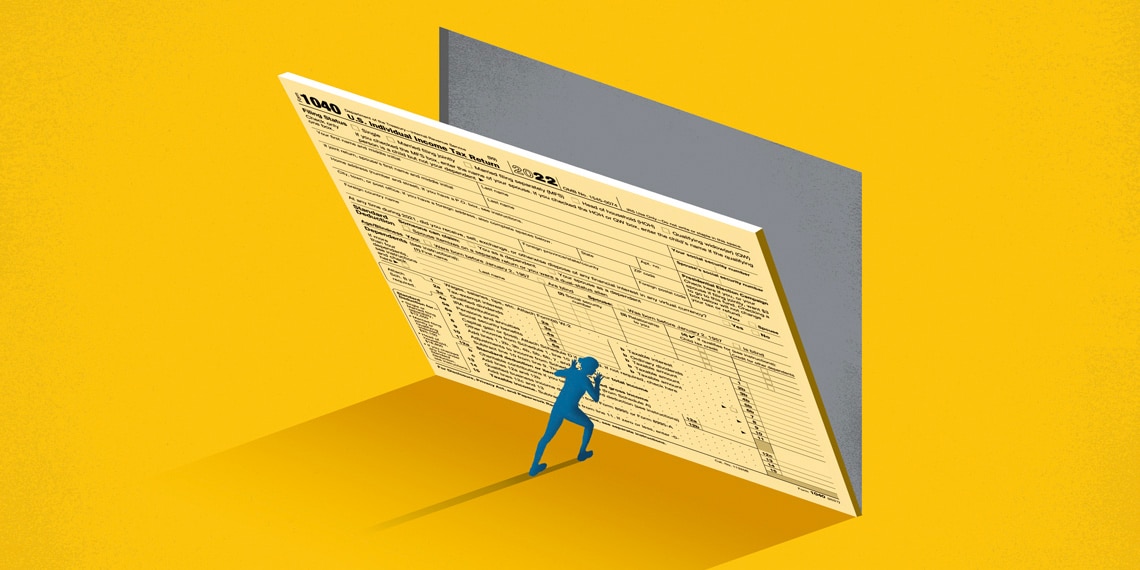
As the end of the year approaches, it’s time to start thinking about your tax strategy. Sure, the April 18 filing deadline might feel far away, but getting started now could save you money (and a major headache) down the line.
Indeed, there are small steps you can take to cut your tax bill and prepare for what’s likely to be a confusing season for many—especially after a year of high inflation, interest rate hikes and uncertainty around a recession.
And if you wait until January 2023 (or later), many of these options won’t be available, at least not for your 2022 return.
So take action now by following this guide—your future self will thank you.
1. Check Your Withholding
The first thing you should do is check your withholding—especially if you went through any major life or employment changes in 2022.
The tax you’ll owe in 2023 depends on many factors, including how much you earn, your marital status, whether you can claim any dependents and the tax deductions and credits you can claim.
If you had a baby, got married or divorced, got a raise or purchased a home or other investments, you might need to adjust your withholding by filling out a new Form W-4 and giving it to your company’s payroll department. You can use the IRS Tax Withholding Estimator to calculate a withholding amount that works for you.
If you’ve underwithheld in 2022, changing your withholding now might not make a huge difference since you don’t have many paychecks left in the calendar year. But you can still make an estimated payment or plan to pay your tax bill in April.
2. Maximize Your 401(k) Contribution
Contributing to a 401(k) plan or other tax-advantaged retirement plan is one of the best ways to reduce your taxes because, unlike many other tax-saving strategies, contributions increase your net worth.
Putting money in a 401(k) reduces your taxable income for the year, meaning you’ll owe less in taxes. It also lowers your adjusted gross income (AGI), which could help you qualify for other tax deductions and credits with income limitations, such as the Earned Income Tax Credit, the student loan interest deduction or the American Opportunity Tax Credit.
For 2022, you can contribute up to $20,500 to a 401(k) plan, and that limit doesn’t include any matching contributions made by your employer. And if you’re over 50, the dollar amount increases by $6,500, or $27,000 in in total.
The deadline to contribute is December 31.
3. Donate to Charity
Although there are many benefits to charitable giving, one exciting advantage for you is the tax deduction. You can claim a tax deduction for cash and non-cash donations, but you must itemize rather than claim the standard deduction on your return to benefit.
The deduction amount you’ll receive depends on the donation type and your AGI. You can deduct up to 60% of your AGI for cash donations. For non-cash contributions, such as donating household items to a nonprofit thrift store, you can deduct up to 30% of your AGI.
Donate by December 31 if you want to claim the deduction on this year’s tax return.
4. Spend Down Your Flexible Spending Account
If you have a flexible spending account (FSA), now is the time to zero it out.
While some FSA plans provide a grace period for spending the money after year-end (or allow you to roll a portion of your remaining funds to the following year), many have “use it or lose it” rules. This means you must use the funds by the end of the year, or your account balance reverts to your employer.
Not sure how to spend those FSA funds? Here are a few ideas:
Stock up on over-the-counter medications. This can be a great way to save money on things like cold or allergy medication.
Schedule any necessary dental work. If you have any dental work that needs to be done, don’t wait until next year. Many dental procedures aren’t covered by insurance, so using your FSA dollars can be a great way to save.
Refill prescriptions. If you plan on refilling any prescriptions in January, see if you can fill them in December instead.
Order new glasses or contacts. Use your FSA funds to buy new eyeglasses or to buy contact lenses and solution in bulk.
Prepay childcare expenses. If you have any upcoming childcare expenses, see if you can prepay them using the remaining funds in your dependent care FSA. Eligible expenses include things like day care, summer camp and after-school care.
5. Create an IRS Online Account
If you don’t have one already, setting up an IRS online account now can prevent a lot of stress if you run into any issues during the filing process later. It’s a quick and easy way to access all your personal tax data—allowing you to see pertinent information like your AGI, estimated tax payments, your payment history, tax records, payment plan details and more.
You can also use your account to make payments and approve authorization requests from your tax professional.
Creating an account only takes about 15 to 30 minutes, assuming you’re prepared. You’ll need:
- • A valid email address
- • Your mailing address
- • A U.S. passport, passport card or state driver’s license
- • Your Social Security number or tax identification number
- • A phone number that is registered to you
Then go to the IRS page for creating a new account and sign up for an ID.me account (this is just a third-party identification service). Once authorized, your IRS account should be up and running.
Janet Berry-Johnson is a CPA and a freelance writer who enjoys making complicated topics like accounting and taxes easy to understand.
Illustration by Rob Dobi
LEARN MORE: Advantages of IRA account offerings

